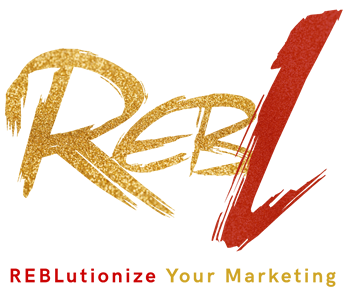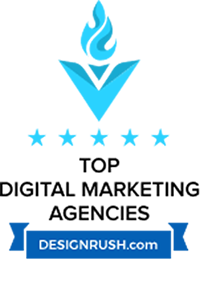CRM content management is vital for agencies navigating client relationships. It improves efficiency by organizing client interactions and enhances satisfaction through personalized, timely communication.
Let’s explore how CRM content management can optimize your agency’s workflow and deliver actionable insights for growth.
Understanding CRM Content Management
CRM content management is like having a straightforward system for organizing all client-related content in one place. It’s not just about tracking contacts and sales. It’s about having a unified space where every piece of communication, from emails to documents, is accessible and aligned.
This approach greatly improves how agencies interact with clients, making sure the right people get the right information when they need it. CRM content management focuses on organizing content to create consistent and meaningful client interactions.
Differentiating CRM from CMS: Why Both Matter
You might wonder how a CRM differs from a CMS, or Content Management System. It’s pretty simple.
CRM: It manages customer relationships, handling data, interactions, and service history.
CMS: On the other hand, it deals with the creation and publication of digital content like websites.
When CRM and CMS work together, they offer a solid framework for managing content and engaging clients effectively. CRM makes sure your interactions are personalized, while CMS keeps your content fresh, enhancing customer satisfaction and content delivery.
Benefits of CRM Content Management for Agencies
A major benefit of CRM content management for agencies is better client communication. With all interactions in one system, agencies can respond timely and personally. This leads to a better understanding of client needs, boosting satisfaction and loyalty.
CRM content management also improves agency operations. It integrates data and communication channels, helping teams work together faster and more efficiently. This saves time and reduces mistakes.
Agencies can use CRM data insights to tailor services and make smart decisions. This helps anticipate client needs and adapt to changes, supporting business growth.
Efficient Resource Allocation through CRM Content Management
CRM content management provides valuable insights into client interactions and project status. This helps agencies focus resources where needed most.
These systems monitor workloads and project timelines, ensuring efficient use of resources. This improves project management and productivity by eliminating delays.
With real-time feedback, agencies can continuously refine their processes. CRM content management equips agencies to manage resources well and keep clients happy.
How CRM Content Management Improves Client Satisfaction
Delivering great client experiences is easier with CRM content management. It helps agencies handle client interactions and information effectively. This ensures each client gets the attention they need.
Agencies can use CRM to personalize interactions based on client preferences and history. This makes clients feel valued and boosts satisfaction. Timely communication keeps clients informed, building trust and loyalty.
Automating Client Interactions and Feedback
Automation is a standout feature of CRM content management. It handles routine client interactions so nothing gets missed. Tools like scheduled follow-ups and reminders efficiently manage inquiries, minimizing human error.
Automated feedback systems let clients share their opinions easily. This flow of feedback helps identify and address issues quickly. Agencies can then enhance their services and strengthen client relationships.
Using these automation tools, agencies can focus on meaningful interactions. This lifts the load of routine tasks and ensures clients receive high-quality service. In a field where client satisfaction is key, CRM content management supports lasting client loyalty.
Key Features to Look for in a CRM Content Management System
When selecting a CRM content management system, agencies should focus on several key features to enhance functionality and user experience.
- Ease of Use: The system should have an intuitive interface. Straightforward navigation minimizes the learning curve for team members. This ensures quick adoption and efficient use among staff.
- Integration Capabilities: Look for CRM systems that connect easily with other tools like email platforms and project management software. This integration reduces manual tasks by automating data transfers and keeping information synchronized across platforms.
- Content Organization: A good CRM should allow categorizing and tagging client content for easy retrieval. This ensures quick access to necessary information, boosting timely communication and informed decision-making.
- Analytics and Reporting: These features help track performance metrics and client engagement. Analyzing data provides actionable insights, refining strategies, and improving client service.
- Scalability: The CRM should grow with your agency. It must support more data and complexity as operations expand, ensuring long-term growth without sacrificing performance.
Integrating CRM with Other Digital Tools
A CRM system that integrates with other digital tools boosts overall operational efficiency.
- Seamless Data Flow: Linking CRM with platforms like email marketing or social media schedulers ensures data flows smoothly between them. This enables multi-channel management from a single point, increasing accuracy and speed.
- Reduced Redundancy: Integrations eliminate redundant tasks and minimize errors. Team members can concentrate on strategic activities, rather than repetitive data entry and verification.
- Comprehensive Tracking: Integration offers a full view of campaigns, client interactions, and performance metrics. This supports quick adjustments and informed decision-making, enhancing client management and satisfaction.
By integrating CRM systems with other tools, agencies can significantly improve operational workflows, leading to enhanced client satisfaction.
Step-by-Step Guide to Implementing CRM Content Management
Implementing CRM content management in an agency takes a clear plan. Here’s how to get going:
- Assess Your Needs: Look at what your agency needs and how things currently run. Find areas where a CRM can make things smoother and fill gaps in efficiency.
- Select the Right CRM System: Pick a system that suits your agency’s needs. Make sure it’s easy to use, works well with other tools, and manages content effectively.
- Data Migration: Figure out how to move your client data into the new system. Focus on keeping data accurate and ensure everything important is moved without a hitch.
- Customize Your System: Adapt the CRM to match your agency’s processes. Adjust fields and templates to fit your specific business practices.
- Pilot Testing: Test the CRM with a small group first. Get their feedback to spot any problems before rolling it out fully.
- System Rollout: Once the pilot works well, introduce the CRM to your whole agency. Make sure everyone is ready for the switch.
Training Your Team for Success
Training your team is key to getting the most out of CRM content management. Here are some practical tips for effective training:
- Training Sessions: Set up workshops to get your team acquainted with the CRM system. Use live demos and hands-on practice.
- Continuous Support and Resources: Offer ongoing help like user guides, video tutorials, and a support team. This way, help is always there when needed.
- Encourage Collaboration: Promote sharing tips and best practices among team members. Regular meetings can help in solving system challenges together.
- Feedback Mechanisms: Collect feedback often from team members to tackle any issues with the system. Use this to adjust training and solve problems.
By following these steps, your agency can effectively implement CRM content management. This enhances how you operate and boosts client interactions.
Top CRM Content Management Tools for Agencies
When it comes to CRM content management tools, some names often stand out for their versatility in managing client data and communications. These tools meet agency-specific needs, enhancing productivity and client interaction.
- Salesforce: A major name in CRM, Salesforce offers features beyond basic contact management. Agencies benefit from its customizable dashboard, detailed analytics, and integration with platforms.
- HubSpot CRM: HubSpot offers a straightforward, user-friendly platform. It’s free to use, with upgrades for advanced features. Great for managing leads and automating tasks.
- Zoho CRM: Known for being budget-friendly, Zoho CRM helps optimize operations. It offers automation features and customization, ideal for agencies with diverse needs.
- Pipedrive: Perfect for sales-focused agencies. Its visual interface helps prioritize deals and track performance easily, boosting productivity in the sales funnel.
- Monday.com: More than just a CRM, it’s a work management tool. It allows customization of workflows, project collaboration, and real-time progress tracking.
- Insightly: Great for nurturing client relationships. Insightly automates communication, manages contacts, and integrates with key applications seamlessly.
These tools offer various functionalities catering to agency needs. Choosing the right tool depends on your agency’s specific needs and goals. Integrating these solutions effectively can improve processes and client satisfaction.
Key Features to Look for in a CRM Content Management System
- User-Friendly Interface: Make sure the system is easy to navigate, allowing your team to access and manage client information efficiently.
- Scalable Solutions: Look for CRM platforms that can grow with your agency. They should accommodate expanding client lists and increased data management needs.
- Integrated Communication Tools: Ensure the CRM can seamlessly link with email, chat, and social media platforms. This helps maintain consistent and streamlined communication with clients.
- Advanced Analytics: Choose a CRM that offers insights into client behavior and sales trends. These insights help in making informed decisions for client strategies.
- Customization Options: Opt for CRM systems that offer adaptable features. This ensures the platform can be tailored to fit your specific industry needs and business processes.
- Automated Workflows: Prioritize systems that simplify repetitive tasks through automation, saving time for your team to focus on strategic planning.
Future Trends in CRM Content Management
The future of CRM content management is focused on improving client experiences. One key trend is integrating AI advancements into CRM systems.
AI will enhance data analysis and predictive modeling to better anticipate client needs.
Another trend is increased customization. Modern CRM platforms are becoming more adaptable to fit specific industry requirements.
They are developing to adjust to various workflows and strategies.
Enhancing Data-Driven Decision Making
Future CRM trends will boost data-driven decision-making. With AI and machine learning, agencies will gain deeper insights into client behaviors.
This leads to precise, actionable insights for crafting effective client strategies.
Predictive analytics can identify potential high-value clients or foresee issues early.
This allows agencies to act proactively and improve resource allocation. Adjusting client interaction plans becomes easier.
Balancing new technology with client-focused strategies is essential. This approach not only improves internal processes but also enriches client experiences.
Integrating CRM with Other Digital Tools
Integrating CRM with digital tools can greatly improve your agency’s operations. Start by identifying the tools your agency already uses, such as email marketing platforms, social media management tools, and analytics services.
Next, prioritize integration tasks based on the impact they will have on streamlining your processes. For instance, integrate your CRM with email marketing tools for automated customer follow-ups. Connect social media tools to track interactions seamlessly.
Use clear and simple steps to connect your CRM with these tools. Consult your CRM provider’s resources for guided instructions on integrations. Test each integration for functionality and adjust settings to fit your agency’s needs.
Keep an ongoing checklist of the tools integrated with your CRM. This will help track which systems are linked and ensure they meet your business objectives. Simplifying integration steps can make for smoother operations without technical headaches.
Conclusion
Using CRM content management is vital for improving agency efficiency and client satisfaction. It centralizes client-related content and enhances communication, making operations more efficient.
CRM isn’t just about organizing data. It personalizes and improves interactions, boosting client trust and loyalty. By automating tasks and integrating systems, your agency can focus on building strong client relationships.
Imagine the improvements in efficiency when teams have the tools they need. Benefits include higher productivity, better decision-making, and quicker responses to client needs.
Consider adopting CRM content management strategies and tools into your operations. With the right system, your agency can stay competitive, exceed client expectations, and achieve better outcomes.
Step-by-Step Guide to Implementing CRM Content Management
- Identify Needs: Pinpoint current workflow gaps where CRM content management can help.
- Choose a CRM: Select a CRM that aligns with your specific agency needs.
- Plan Data Migration: Organize a smooth transition of data into the new system.
- Customize System: Adjust the CRM to fit your agency’s operations and processes.
- Train the Team: Conduct thorough training sessions to boost team adoption.
- Pilot Test: Run a small-scale test to troubleshoot potential issues.
- Full Rollout: Implement the CRM across the agency after successful testing.
- Integrate Tools: Connect CRM with email marketing, social media, and other tools.
- Monitor and Adjust: Regularly review and tweak the system for continuous improvement.




